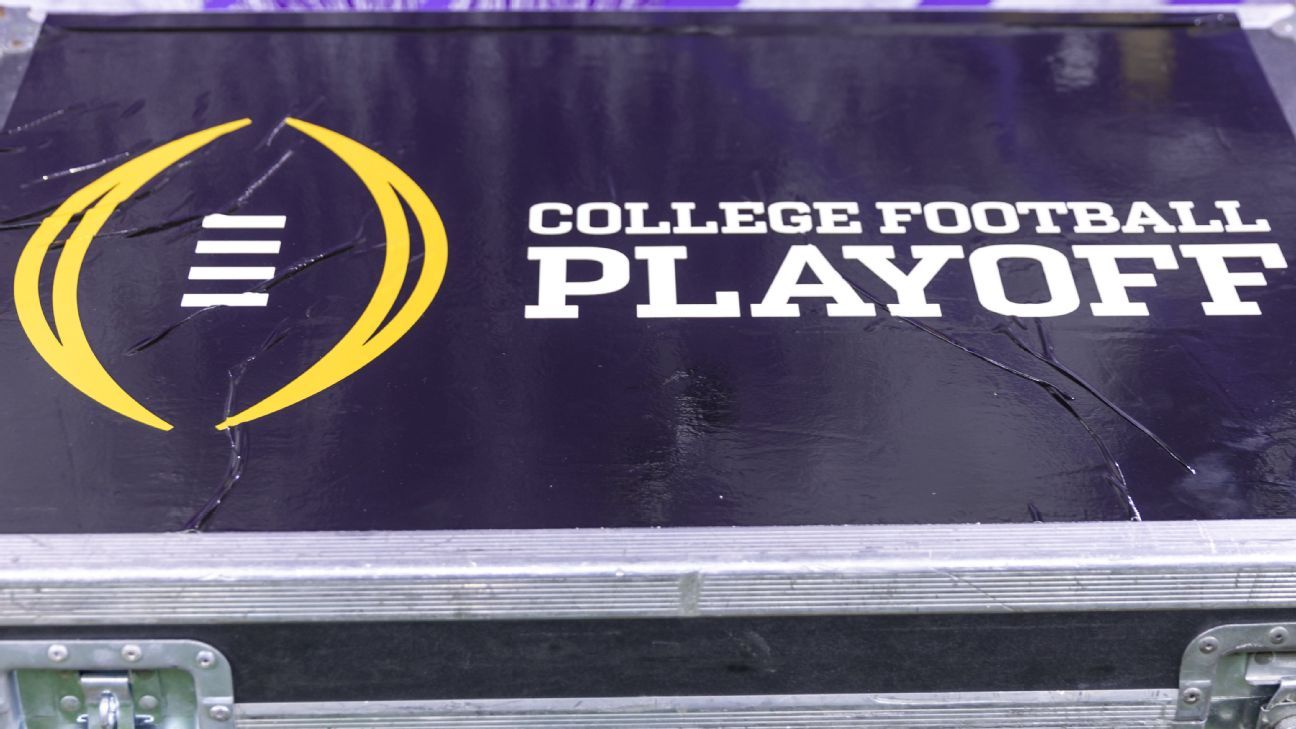College Football Playoff leaders are “on target” to come to a resolution by the end of the week on a proposed revenue distribution and governance structure in the next contract, sources told ESPN, but some important conversations remain before they agree to sign a lucrative TV deal with ESPN.
Commissioners of the Mountain West Conference, Sun Belt, Mid-American Conference, Conference USA and American Athletic Conference aren’t keen on the proposed revenue distribution, which sources said would limit the Group of 5 conferences from making any substantial increase in revenue in the next contract, which would begin in 2026. One source described it a “slight uptick; nominal.”
The question is if there is enough pushback to delay or derail the progress — or if those leagues are simply in a tough spot and have to acquiesce or risk being excluded from the CFP. Sources have leaned toward the latter.
The CFP’s management committee was expected to have a conversation about it on Tuesday evening, and one source said the Group of 5 commissioners held their own separate call to address the issue.
Starting in 2026, ESPN is poised to spend an average of nearly $1.3 billion on the playoff for six seasons. The deal would include the final two years on the current CFP contract, plus a new six-year agreement for the next iteration of the playoff, sources told ESPN. ESPN is the sole rights-holder in the current, 12-year contract, which expires following the 2025 season. The CFP will expand from four to 12 teams this fall.
The Big Ten and SEC have made it clear the next contract will be more financially favorable than the current one, where 80% of the money is split evenly among the Power 5 leagues. Four power conferences remain following sweeping realignment, and the Big Ten and SEC have a combined 34 teams.
Sources told ESPN last month that discussions have centered around the SEC and Big Ten earning somewhere between 25% and 30% of the CFP revenue. The ACC and Big 12 would be next, and they’d earn somewhere between 15% and 20%. That leaves a smaller chunk — somewhere around 6% to 10% for the other leagues and nearly 1% for Notre Dame.
The math isn’t clean, sources caution, as some money needs to go to expenses and to places like the other remaining independent (UConn). But those are the general financial ballparks being discussed. SEC commissioner Greg Sankey has made it clear that the SEC has delivered 40% of the teams in the playoff and he has been one of the primary drivers behind a new revenue model.
The 10 FBS commissioners are using Tuesday and Wednesday to discuss the details with their athletic directors, presidents and chancellors and gather feedback. One source said that “in a perfect world” they could come to an agreement on the revenue and TV deal as early as Thursday. Regardless of when there is a resolution, multiple sources have said the details of a format in 2026 and beyond — from the number of teams to how they qualify — won’t be settled until after the TV deal is done.
One clause that has been introduced and agreed upon according to sources is a “look-in” in 2028 to give the commissioners a chance to reevaluate the contractual agreements based on how the field and performance has unfolded to that point. There’s also a clause that permits that timeline to be accelerated if there is “material realignment” again.
